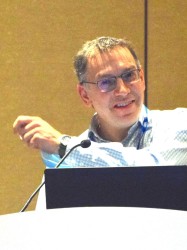BibTex format
@article{Ratcliffe:2023:10.1136/archdischild-2022-324375,
author = {Ratcliffe, H and Tiley, KS and Andrews, N and Amirthalingam, G and Vichos, I and Morey, E and Douglas, NL and Marinou, S and Plested, E and Aley, P and Galiza, EP and Faust, SN and Hughes, S and Murray, CS and Roderick, M and Shackley, F and Oddie, SJ and Lees, T and Turner, DPJ and Raman, M and Owens, S and Turner, P and Cockerill, H and Lopez, Bernal J and Linley, E and Borrow, R and Brown, K and Ramsay, ME and Voysey, M and Snape, MD},
doi = {10.1136/archdischild-2022-324375},
journal = {Archives of Disease in Childhood},
pages = {123--130},
title = {Community seroprevalence of SARS-CoV-2 in children and adolescents in England, 2019–2021},
url = {http://dx.doi.org/10.1136/archdischild-2022-324375},
volume = {108},
year = {2023}
}

